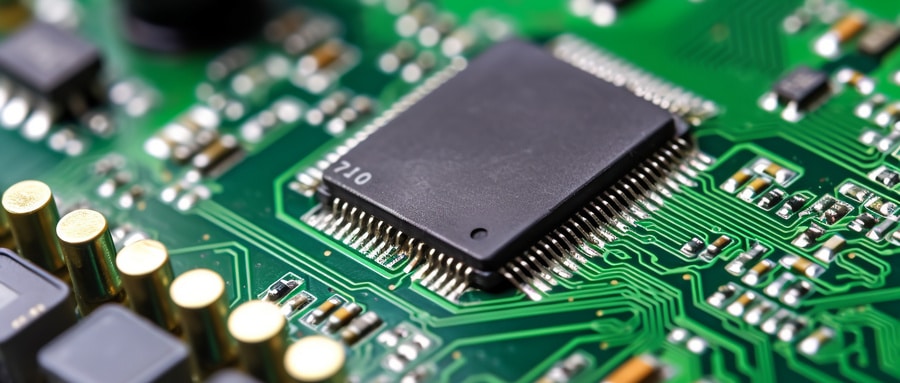Addressing and Preventing PCB Delamination: Essential Insights and Best Practices
Delamination Introduction
Delamination is a serious threat in electronic production and printed circuit board (PCB) production, potentially jeopardizing its performance and longevity. This comprehensive guide explores PCB delamination’s concept, potential causes, destructive impact, as well as effective prevention methods used within industry.
Understanding PCB Delamination
PCB delamination refers to the separation between layers of laminate within the PCB or between its laminate and copper metal layers, often caused by excess moisture, high temperatures or mechanical stress–three factors which can wreak havoc with its overall functionality.
Causes of PCB Delamination
As there are various causes that contribute to PCB delamination, understanding these causes will provide the means to effectively address and prevent it.
- Heat Stress: PCBs can be exposed to extreme temperatures during processes like soldering, reflow and wave soldering that expose them to high temperatures that can contribute to delamination if cooling management is inadequately handled.
- Moisture: Careless handling of PCBs in humid environments can allow moisture to seep into their laminates and cause delamination when subjected to high heat. This moisture absorbed can eventually vaporize into vapour and expand when subjected to extreme conditions, pushing their laminates apart and leading to delamination.
- Mechanical Stress: Improper handling or design flaws may cause mechanical stresses which lead to delamination and lead to mechanical stress in PCBs.
Delamination’s Impact on Circuits
Delamination is more than a structural concern for PCBs; it can have far-reaching repercussions that adversely impact performance, leading to contact interruptions, impedance variations and defective circuitry as a result of delaminated areas. Furthermore, delamination could cause blow holes and measling which pose potential threats to longevity and reliability of electronic equipment.

Preventing PCB Delamination
Effective preventive measures against PCB delamination include directly addressing its causes. For example:
- Storage and Handling: Preventing moisture build-up is of utmost importance when it comes to PCB storage and handling, so storing in less humid, cool environments with an added protective layer for mechanical stresses can help.
- Effective PCB Design: By understanding the tolerance limits of materials used in PCB designs, delamination may be avoided.
- Controlled Soldering Process: Varying soldering temperatures, durations and efficiencies can help manage heat stress on PCB boards to lower delamination risks and ensure consistent results.
PCB delamination threatens electronic efficiency and must be addressed. Effective mitigation strategies as well as robust handling and designing practices must be employed to mitigate this nuisance, so by adopting these insights PCB-related industries can effectively control delamination issues to guarantee long-term, high performance production of PCB products.
FAQ:
- Q: What is delamination in a Printed Circuit Board (PCB)?
A: Delamination refers to the separation of the epoxy and glass combination that makes up the FR4 material in a PCB. It typically occurs due to excessive heat and moisture. - Q: What causes PCB delamination?
A: Common causes include thermal stress during soldering, prolonged exposure to high temperatures, poor quality of board materials, manufacturing process errors, and moisture. - Q: How can I prevent PCB delamination?
A: Delamination can be prevented by using high-quality materials, proper storage to protect from moisture, controlling the manufacturing process temperatures, and careful handling. - Q: Can a delaminated PCB be repaired?
A: Most often, the damage from delamination is irreversible, so prevention is critical. If it’s minor, sometimes the board can still be used, but it’s typically recommended to replace delaminated PCBs to prevent potential failures. - Q: How can you identify delamination in PCBs?
A: Signs of delamination include visible separations or “bubbles” in the layers of the PCB, discoloration, or an inability of components to connect properly due to a broken connection. - Q: Does delamination affect the functionality of the PCB?
A: Yes, delamination can affect the functionality of the PCB by disrupting electrical connections and potentially causing short circuits. It can also reduce the board’s thermal performance. - Q: How does moisture contribute to delamination?
A: Moisture can get trapped within the layers of a PCB. When the board is subject to intense heat (like during soldering), this moisture can turn into steam and cause the layers to separate. - Q: How does the manufacturing process impact delamination?
A: If temperatures aren’t well managed during processes such as lamination and soldering, it could lead to delamination. Materials also need to be properly prepped before these processes, including ensuring they’re adequately dry. - Q: Can delamination occur over time?
A: Yes, delamination can occur over time, especially in environments with large temperature fluctuations or high humidity. - Q: Is delamination a common problem in PCBs?
A: While manufacturers try to prevent delamination, it can occur if the boards are not manufactured, stored, or handled properly. It’s not considered a “common” problem, but it’s a serious one when it does occur.























